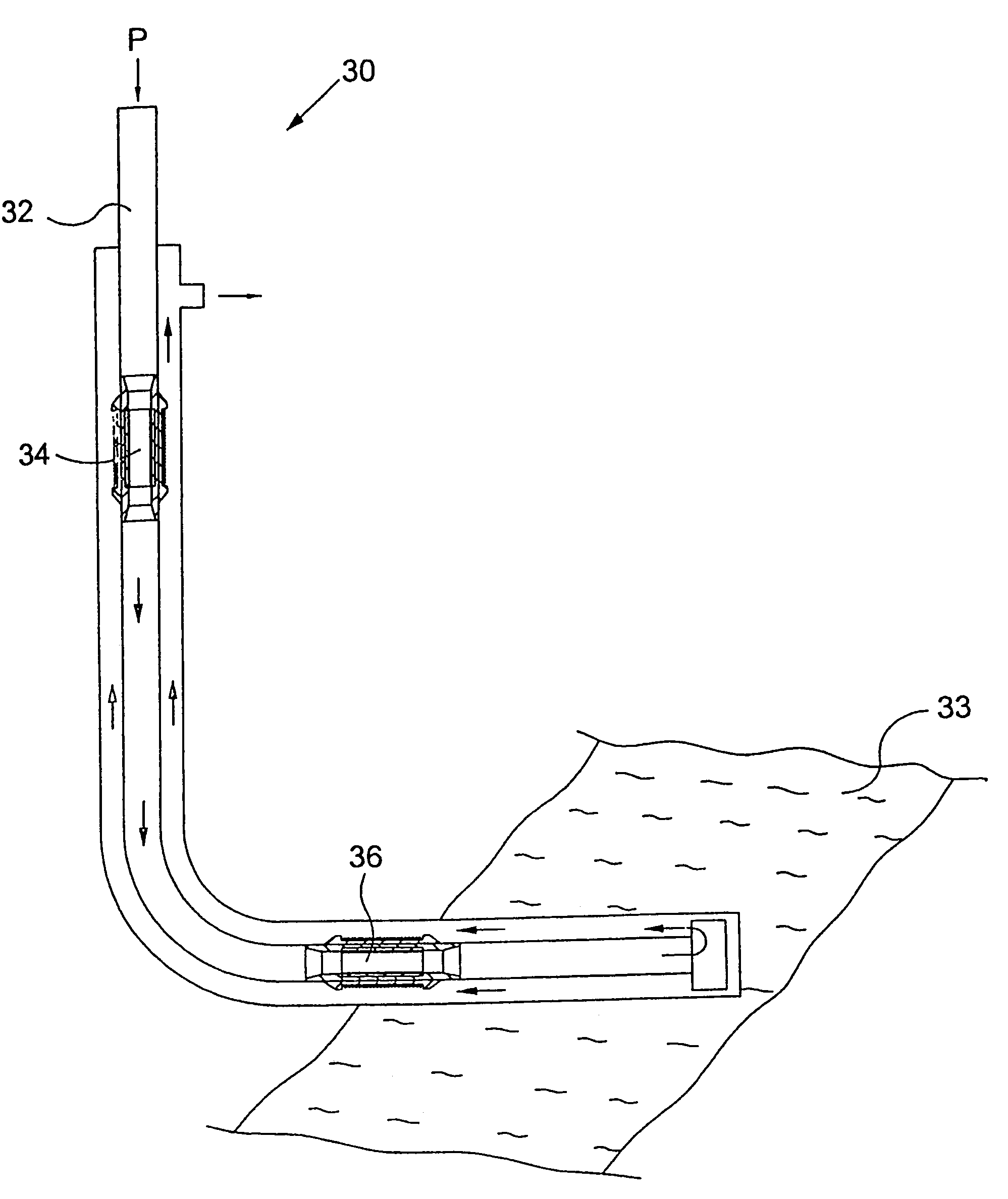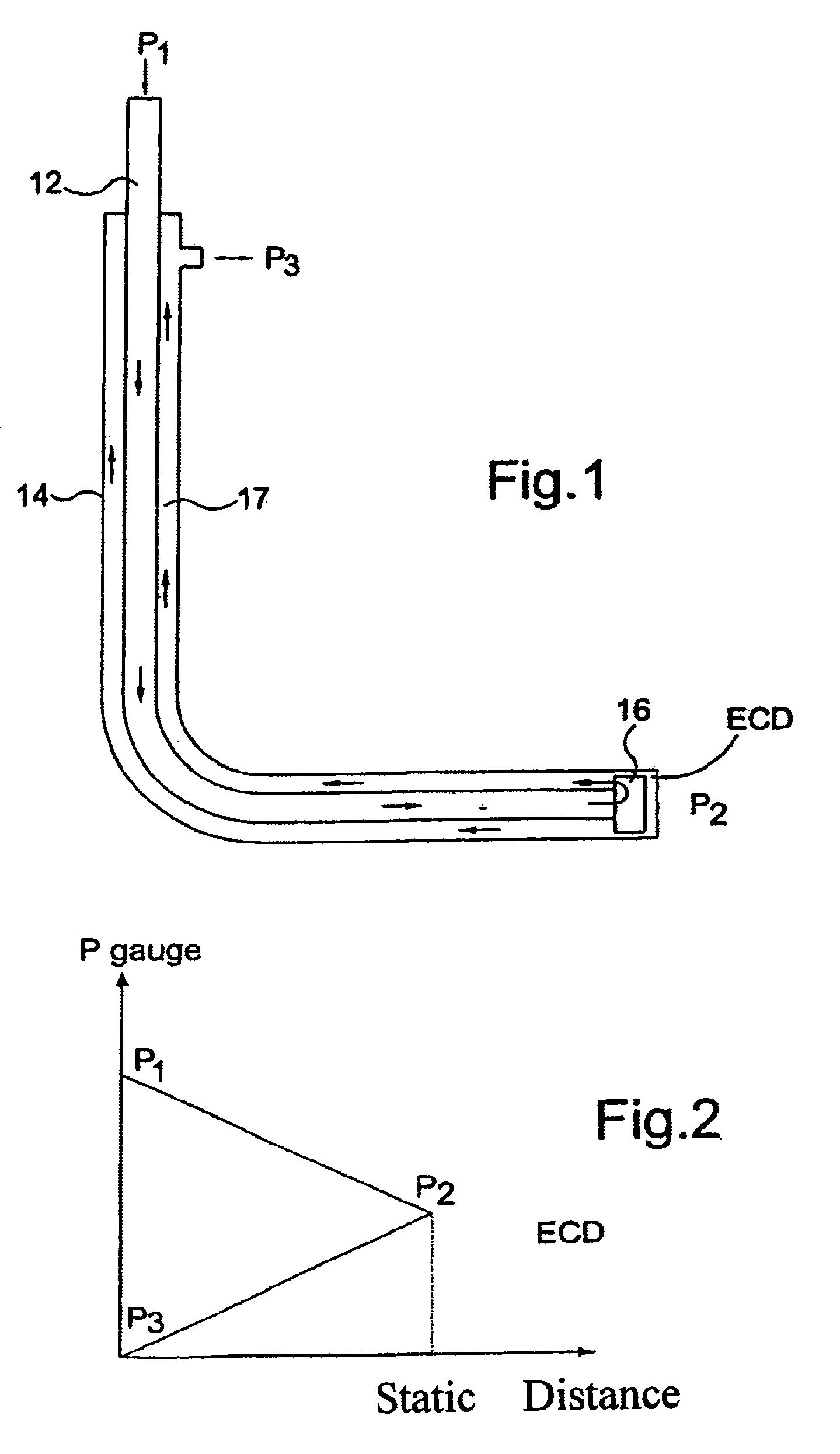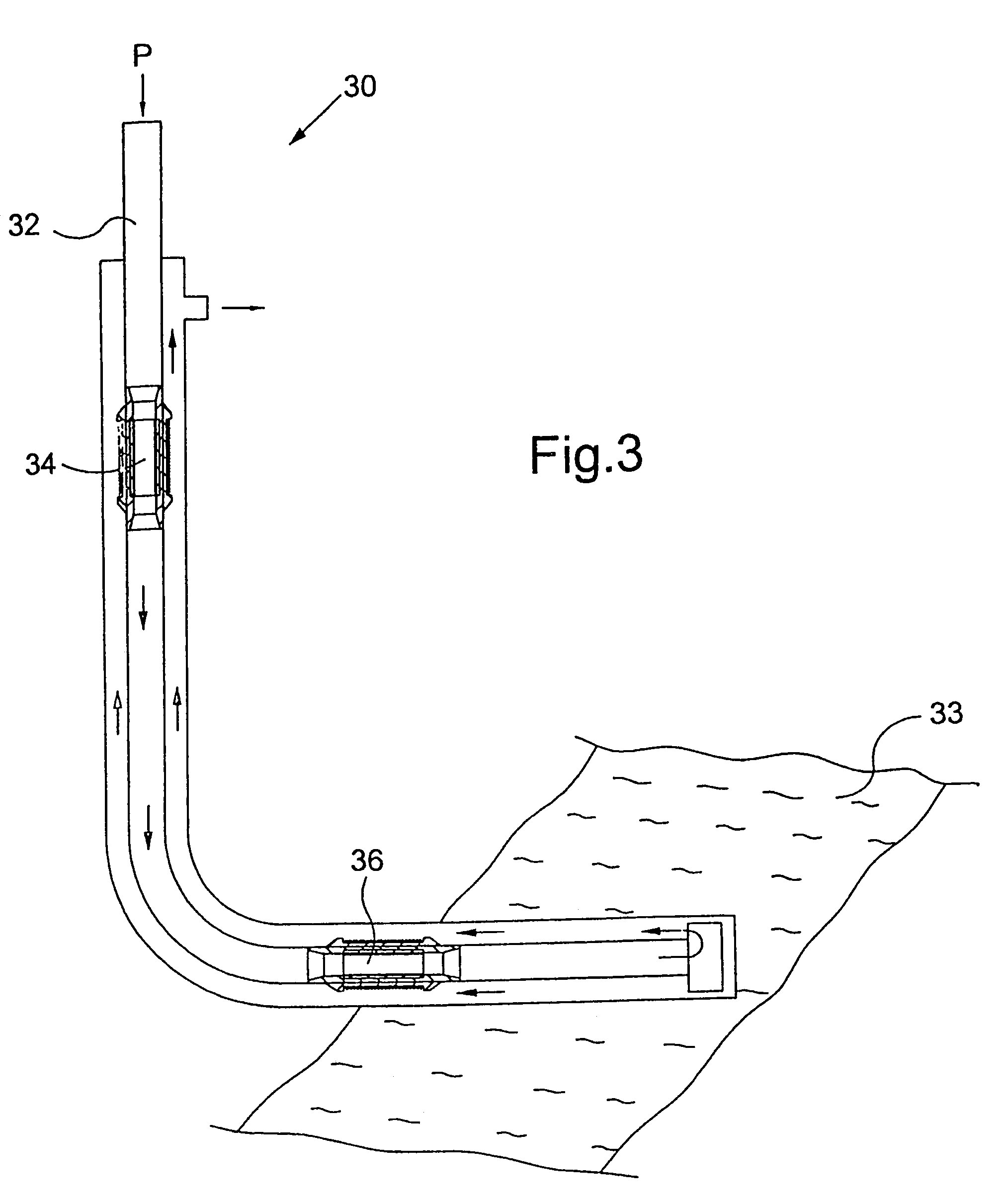Apparatus and methods for drilling
a drilling apparatus and drilling method technology, applied in the direction of drilling composition, drilling/well accessories, chemistry apparatus and processes, etc., can solve the problems of reducing affecting the production capacity of formation, and adding to the friction associated pressure loss, so as to maintain the flow speed and cut
- Summary
- Abstract
- Description
- Claims
- Application Information
AI Technical Summary
Benefits of technology
Problems solved by technology
Method used
Image
Examples
Embodiment Construction
[0033]Reference is first made to FIG. 1 of the drawings, which illustrates a conventional drilling operation. A rotating drill string 12 extends through a borehole 14, and drilling mud is pumped from the surface down the drill string 12, to exit the string via jetting ports (not shown) in a drill bit 16, and returns to the surface via the annulus 17 between the string 14 and the bore hole wall.
[0034]Reference is now also made to FIG. 2 of the drawings, which is a sketch graph of the pressure of the drilling mud at various points in the wellbore 14 as illustrated in FIG. 1. The mud enters the drillstring at the surface at a relatively high pressure P1, and emerges from the bit 16 at a lower pressure P2 reflecting the pressure losses resulting from the passage of the mud through the string 12 and bit 16. The drilling mud returns to the surface via the annulus 17 and reaches surface at close to atmospheric pressure P3.
[0035]FIG. 3 of the drawings illustrates a drilling operation in acc...
PUM
 Login to View More
Login to View More Abstract
Description
Claims
Application Information
 Login to View More
Login to View More - R&D
- Intellectual Property
- Life Sciences
- Materials
- Tech Scout
- Unparalleled Data Quality
- Higher Quality Content
- 60% Fewer Hallucinations
Browse by: Latest US Patents, China's latest patents, Technical Efficacy Thesaurus, Application Domain, Technology Topic, Popular Technical Reports.
© 2025 PatSnap. All rights reserved.Legal|Privacy policy|Modern Slavery Act Transparency Statement|Sitemap|About US| Contact US: help@patsnap.com



